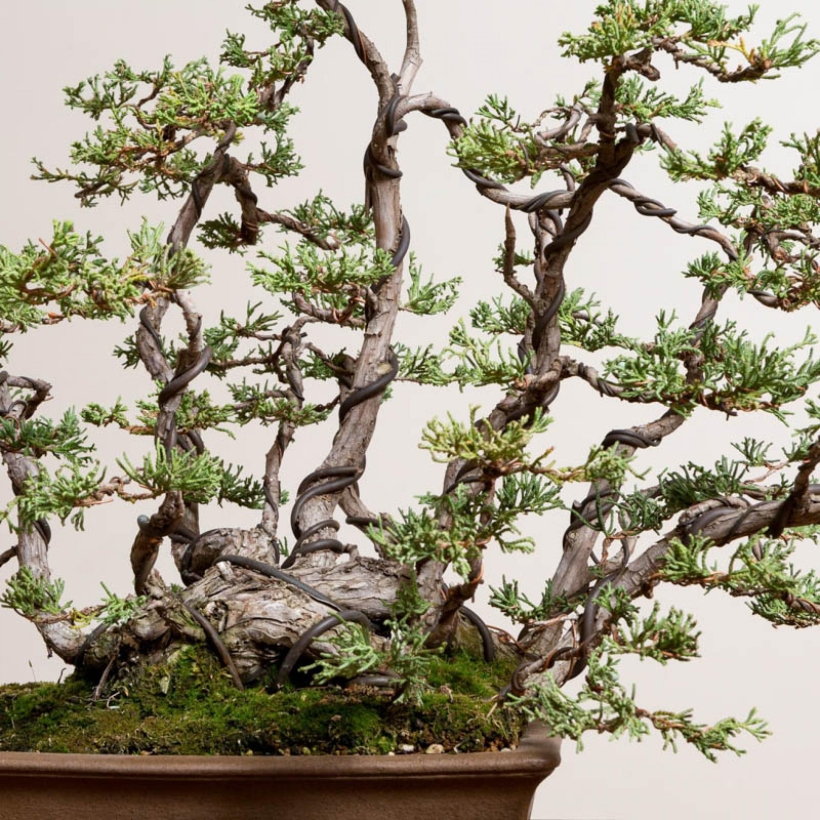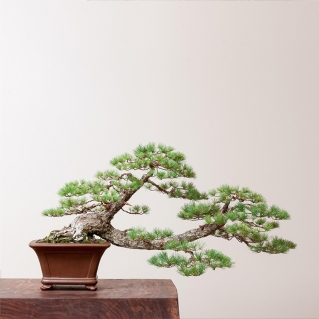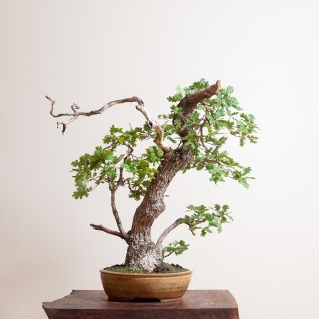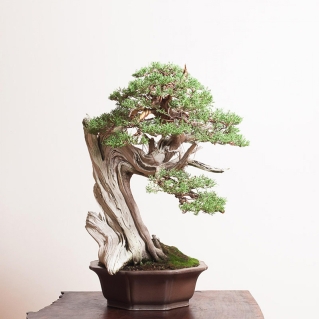Blue Rug Juniper Bonsai
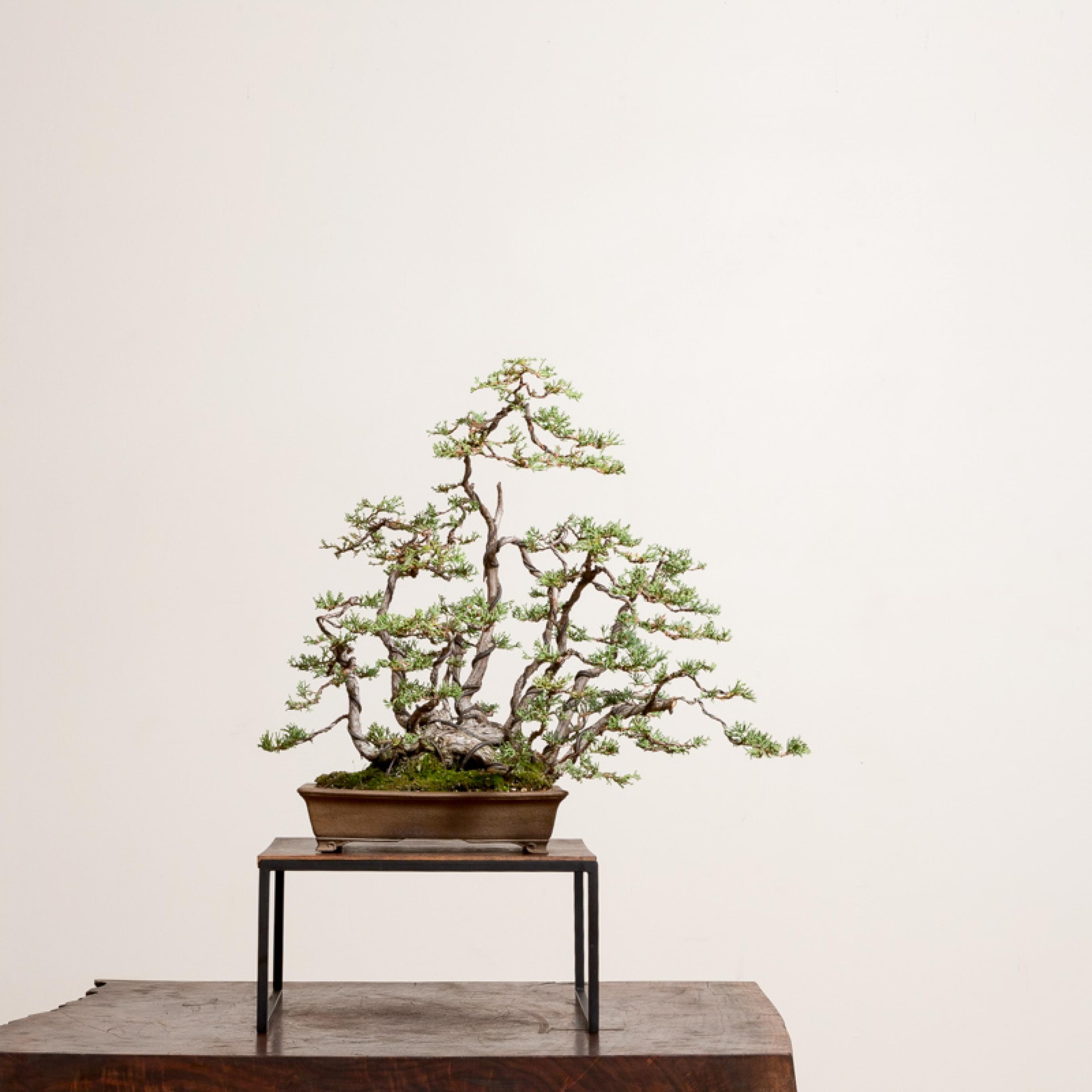
General Information
Blue rug juniper—Juniperus horizontalis—is an incredible species native to North America. It is also known as creeping juniper due to the way it grows and is great for creating ground cover outside of the bonsai world.
Blue rug juniper is low to the ground and has contorted trunks with compact foliar mass. It is a durable species and takes well to bonsai cultivation.
Blue rug juniper was not used in bonsai until it was introduced by Nick Lenz in his book Bonsai From the Wild: Collecting, Styling & Caring for Bonsai. He had a great deal of success with this species and inspired many others to begin working with it as well.
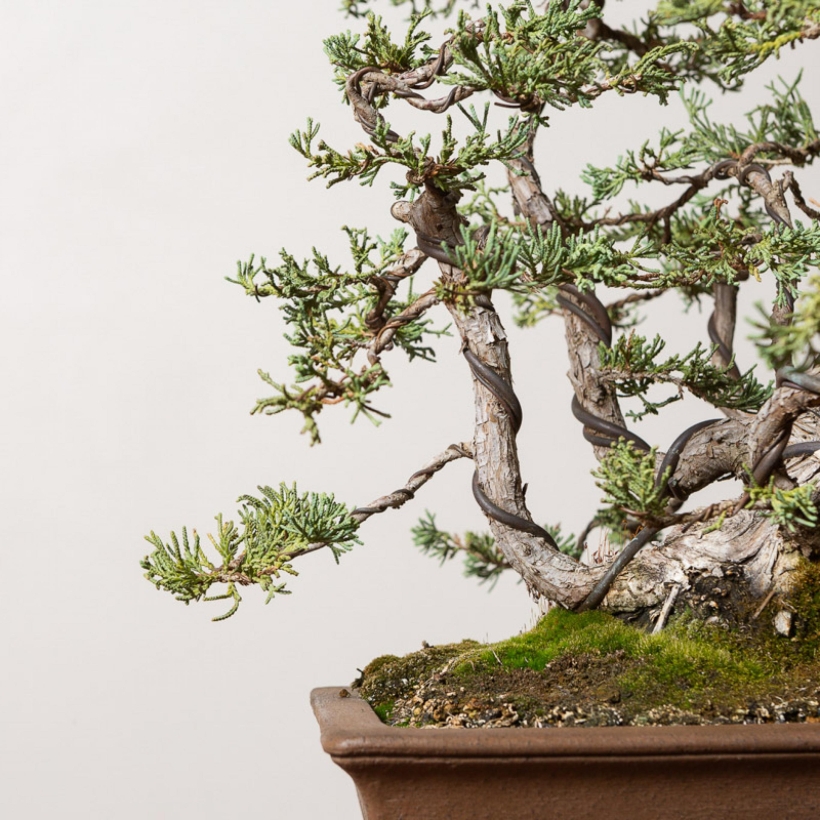
Caring for Blue Rug Juniper Bonsai
Watering
All junipers have strength in their foliar mass. This foliar mass must be built up for the tree to establish its root system, so the tree should be allowed to grow freely in the spring. This fuels the sugar starch loading and the continued evolution of the tree.
Since blue rug junipers have a fine root system that is directly proportional to the fine foliage and needle mass, they should be given a lot of water. Of course, they should be allowed to dry out between waterings, just as you would with any juniper, pine, or dry land conifer.
Sun Exposure
Blue rug junipers love full sun. However, they can tolerate areas where they are in the sun for most of the day but have some periods of shade.
Temperature
Blue rug juniper is a durable species that is quite tolerant of extreme heat and cold.
However, once a blue rug juniper is in a bonsai container, you need to be careful about protecting its fine roots. The finer the foliage and roots, the more susceptible the plant is to low temperatures. Blue rug juniper bonsai should be protected once temps drop below 10℉.
Fertilizing
Blue rug juniper is a moderate-growing plant that won’t explode with tremendous elongated growth.
You will often see it described with words like:
● Creeping
● Mounding; or
● Crawling
Because it takes a lot of time to create and build girth and foliar mass, moderate fertilization is all that’s needed. Heavy fertilization is a waste and probably causes the tree to be more susceptible to pests and disease rather than helping it grow at an accelerated rate.
Pruning
Blue rug juniper’s strength is in its foliage, which is why spring growth should be allowed to occur.
Structural pruning should happen in the spring and fall. We can do heavy branch reduction and initial styling in the spring just before they produce growth or in the early fall just past the heat of summer.
Pruning for refinement should occur in mid-summer after the spring’s vigorous flush hardens off, typically from late June through August. During this time, you can prune blue rug juniper to be compact and transition its energy to tertiary ramification.
Wiring
Blue rug juniper bonsai should be wired in winter when the tree is dormant. Once the new shapes of the branches have set, be sure to carefully remove the wire with cutters so as not to damage the tree.
Repotting
Blue rug juniper bonsai care includes repotting it with equal parts akadama, pumice and lava. The fineness of the foliage calls for one-sixteenth to one-fourth or two-millimeter to six-millimeter particle sizes. This will allow you to keep some portion of the root system intact.
Blue rug junipers root prolifically, as they are typically found as young nursery stock trees these days. Just be careful not to ever bare root a juniper.
Propagation
The most viable source of blue rug juniper is nursery stock, which is often grown as specialty topiaries or conifers. This means it usually has a straight trunk and then branches out at the top with fantastic pieces of movement.
In this case, air layering is a profound and pivotal technique to manage it based on its vigor.
Blue rug juniper may also be propagated from cuttings, but not many juniper species are ever propagated from seed.
Pests/Disease
Blue rug juniper is susceptible to scale, particularly the minute cypress scale insect, Carulaspis minima. It may also suffer from spider mites like any other juniper.
You should also be concerned about your blue rug juniper contracting phomopsis and juniper tip blight.
Blue Rug Juniper Bonsai FAQS
It is native to North America and grows throughout most of Canada from Yukon east to Newfoundland as well as in some of the northern United States.
Absolutely not. Just because it’s a creeping ground cover doesn’t mean that blue rug juniper can’t or shouldn’t be used as an upright form of the tree.
Using it upright is a far better aesthetic for the tree that highlights the lines and interesting movement it is prized for having in its branches.
